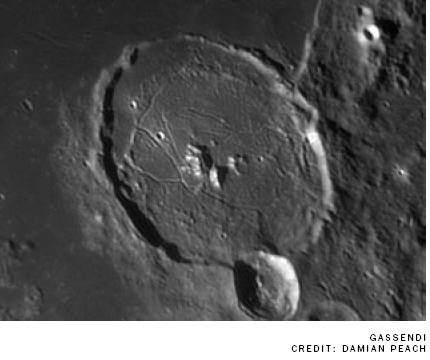South around an easily recognizable lunar formation - Gassendi Crater. Its diameter is 110 kilometers and its depth is about 2 kilometers. This ancient crater contains three peaks in its center.
Tammy Plotner and Jeff Barber, Universe Today

Even today we return to the moon, to a southern area around an easily recognizable lunar formation - the Gassendi Crater. Its diameter is 110 kilometers and its depth is about 2 kilometers. This ancient crater contains three peaks in its center. From what was once a "perfect circle" on the moon, the southern wall of Gassandi has been eroded by lava flows for 48 kilometers. Thanks to this flow, there are beautiful formations to observe with a telescope, of furrows and tributaries on the bottom. The bright ring of Gassendi is on the northern shore of Mar Humorum.
And to the stars. Alnitak (Zeta Orionis) is the easternmost star in Orion's belt. It is a double star where the stars are far enough away that they can be seen in any telescope, although it would take some effort to actually separate the large star from the tiny point of light 2.3 arcseconds away.
When viewing this close pair, remember that both stars are 800 light-years away and Zeta A has the hottest photosphere of any known star. At a temperature of 31 degrees Kelvin/Celsius, the temperature is so hot that the star glows especially in the ultraviolet.
Look for a third star - a magnitude 10 star one arc minute away from the bright pair. When you see Oo clearly, you'll also be ready to start looking for the palest member of the famous trapezoid at the heart of M42.
